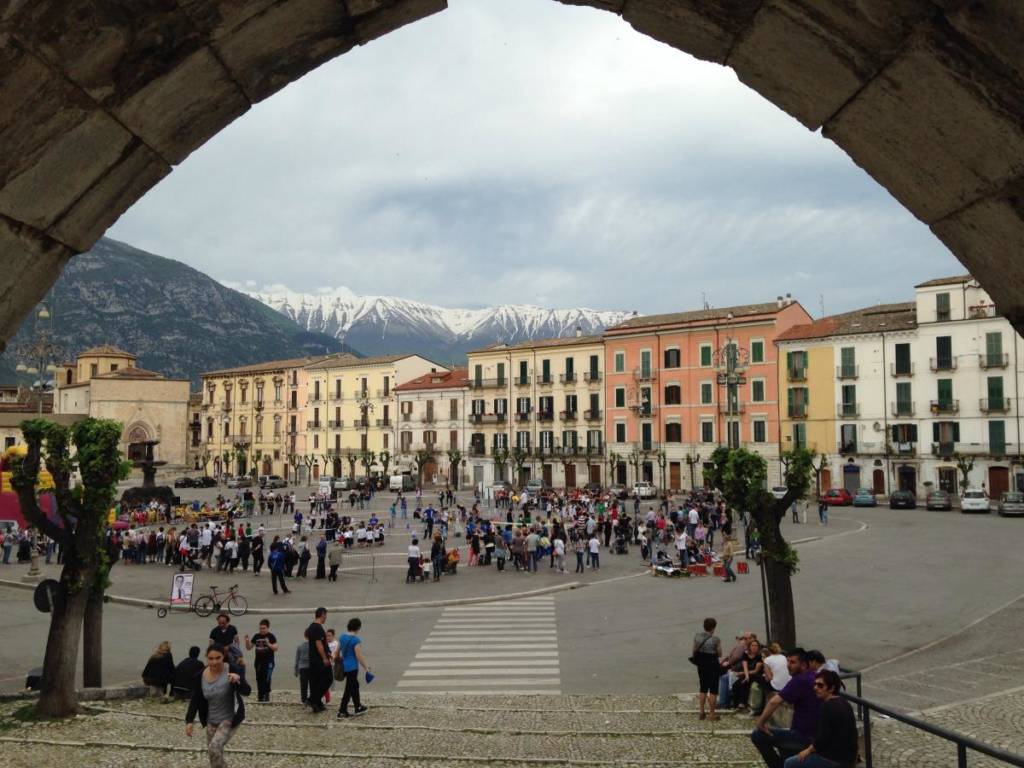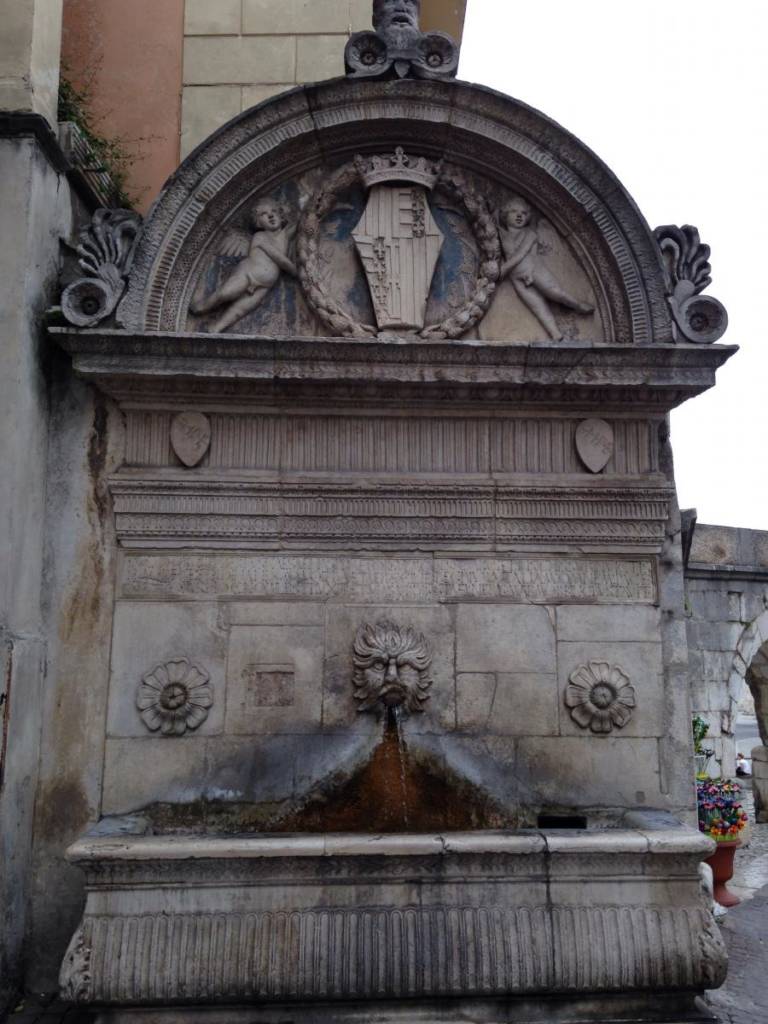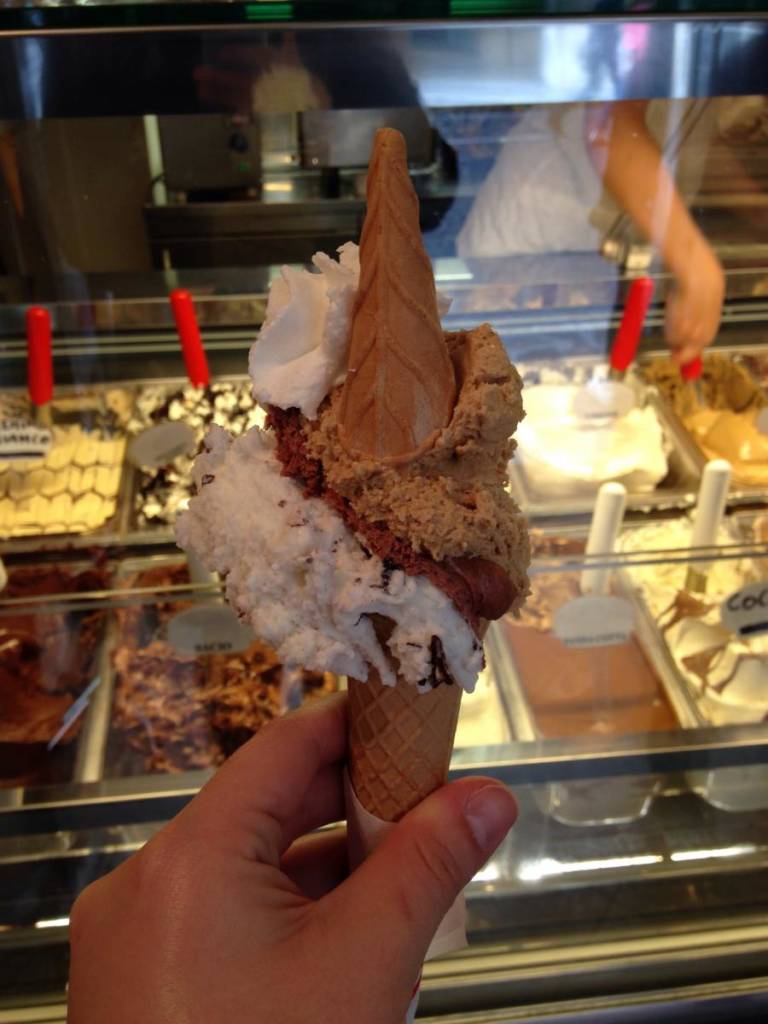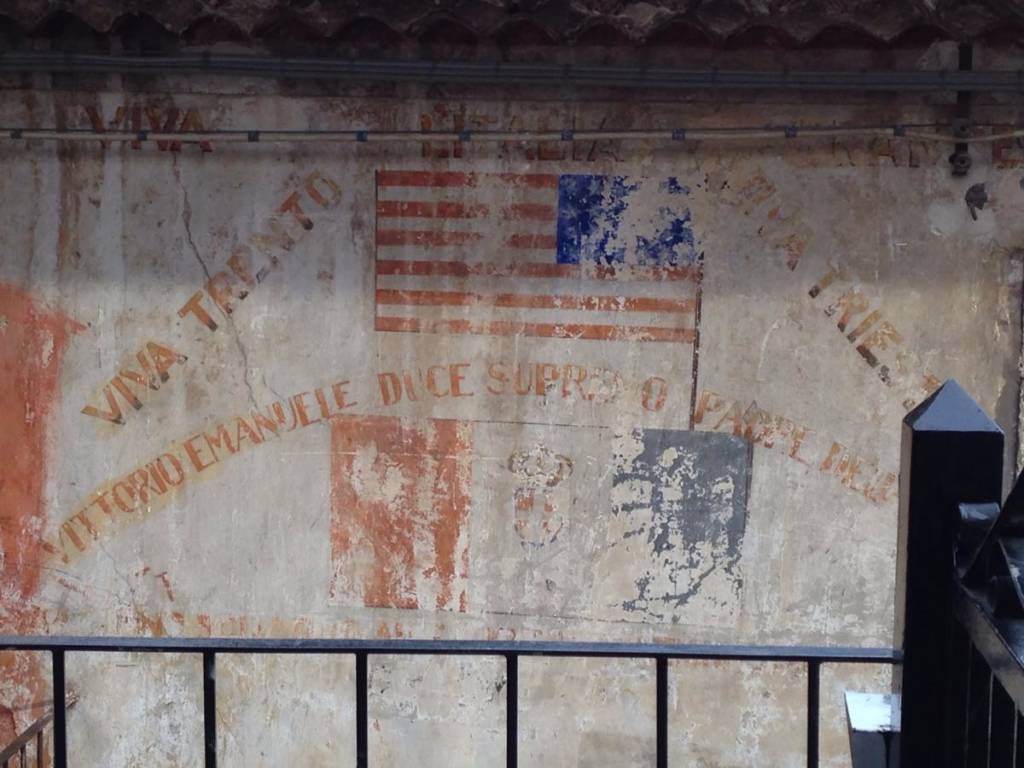
Getting Around:
When your cousin offers to meet you at the airport and drive you to Abruzzo, don’t even pretend to defer. As you will learn from the passenger seat, to say “driving” in Italy is to say “a lot of close calls.” A tunnel on a two-lane road may admit just one car. Passing’s no fun senza risk. In small towns, main roads are closed on Sundays so neighbors can chat in the street. Memorize multiple routes.
During road trips, stopping for coffee means ordering a caffé lungo at the rest stop’s register. Collect it at the bar, then drink it from its porcelain cup standing at a nearby table. Before getting back on the autostrada, do some shopping: wine for dinner, a bag of dried pasta, and some Dolce Del Papa (Pope Cake) should set you up for the night.
When traveling solo by train, rely on the kindness of strangers. The woman sitting next to you will set down her iPad, help you lift your suitcase to the overhead rack, and share the square of pizza she later pulls from her purse. And the girl you met on the platform? She will see you safely from Pescara to Ancona to Foligno to Assisi, coo over pictures of your dogs, and refuse the 10 € you try to give her on arrival.

Cuisine:
Come hungry to lunch at the home of your cousin’s Italian girlfriend, as your plate of risotto would feed a family of three. Following the second course of chicken with mushrooms and parmigiana, sautéed kale, and marinated bell peppers, you must finish the piece of goat cheese cake topped with sugared strawberries. Full as you are, you will not be sorry. After il pranzo, nap (not that you’ll have a choice).
Foods Middle Italy lacks: peanut butter, jarred spaghetti sauce, Lean Cuisines. Don’t worry. You will not miss them.
Chocolates come wrapped in poems (ex. Ho sempre davanti agli occhi l’amore che abbiamo conoscuito insieme. The love we have known together is always before my eyes.—Eloisa n. 237)
In remote regions, some bakers and grocers make house calls.
The last bit of bread for mopping up sauce is called a scarpetta or “little shoe,” because as you move it in circles si cammina circa (it walks around). Instead of a heel, call the end of the bread il culo, which you’ll see makes a lot of sense when you look it up.
At the local gelateria, sample a cone of Smurf, love, Viagra, or kisses. Or, what the heck, try them all.

Things to See and Do:
Count shades of green out your window. If you come up with less than seventeen then you’re doing something wrong.
Backyards in Middle Italy may host trees of cherry or peach, fig or olive, and a variety of citrus fruits. Collect rosemary and thyme that sprout at will. Call plants by their Latin names. Clematis vitalba is both a weed that chokes trees to death, and an omelet additive with a taste like asparagus. Ginestrelle can be dried to make brooms. Poppies dot the roadsides. Oaks must be jealously guarded as truffles grow beneath them and boars will rend the ground to gorge. Dogs will too. And other people.
In the slow-beating heart of the Apennines, the cuckoo’s only link to time is when it wakes you in the morning.
After breakfast, you have two hikes to choose from: one ends at a thirteenth-century church, the other at a tenth-century one. To return, follow the boar path down the mountain. (To save your shoes, remember: where there’s a boar path, there’s boar poppa.)
Want to live like your ancestors? Launder clothes in the open-air stone troughs at the edge of town. On your way home, carry back a gallon of spring water from the public fontana.
In your free time, study the remnants of World War II graffiti flaking from exterior walls; Viva Trento; Viva Trieste; a backwards American flag; the name of the last king; vincere: to win.

Local Culture:
At 7 p.m., join villagers on the plaza for the passiagiatta and stroll the square where children dance in costume or practice jousting on a field of trucked-in sand. Walk the main street with gelato in hand, and settle on a bench in the park where children play football or cluster with hands free of phones, ears empty of buds. Be vigilant, though: it’s everyone’s job to watch out for i bambini. Letting a child come to harm will earn a scolding from her mother.
Speaking of mothers, in Italy they can’t abide shower-wet hair. To keep you from getting sick, they will take you by the hand to the bathroom where you may choose between a diffuser, a regular dryer, or a contraption for defining curls. For other matters of hygiene, refer to the bidet.
Need a polo shirt, hot dog warmer, blender, or casserole dish? Stop by your local hardware store.
In Italy, your cousin’s girlfriend will give you a bag of necessary things on parting: the rest of the goat cheese cake, a package of spaghetti, two biscotti wrapped in paper towels, and a bulb of the red garlic that is “the best in the world.” In exchange, present your bag of trinkets from the States—two novelty t-shirts, a deck of cards printed with windmills, and a frosted, Texas-shaped cookie. After exclaiming over each item, she will press her hands to her heart. Siete come mia figlia, she will say. You are like my own daughter. Tear up. Let her kiss both your cheeks. Believe every word.
Join us on May 21, 2014 for The Common in the (Eternal) City, a Rome-themed benefit gala.




